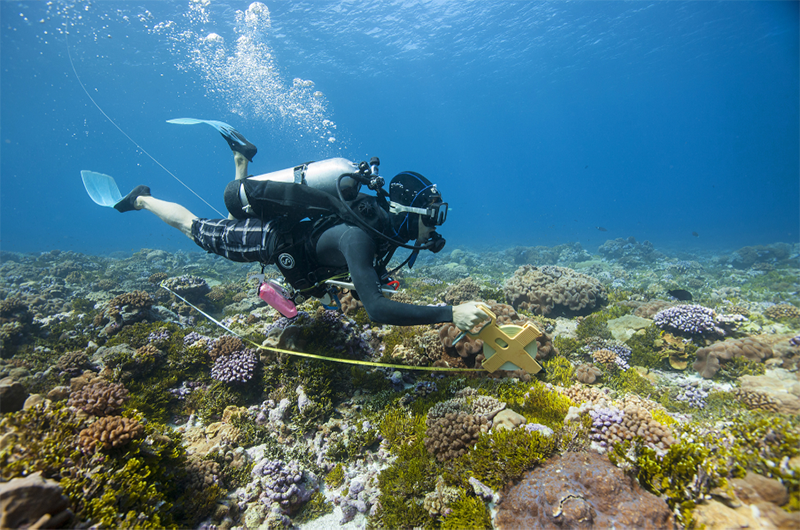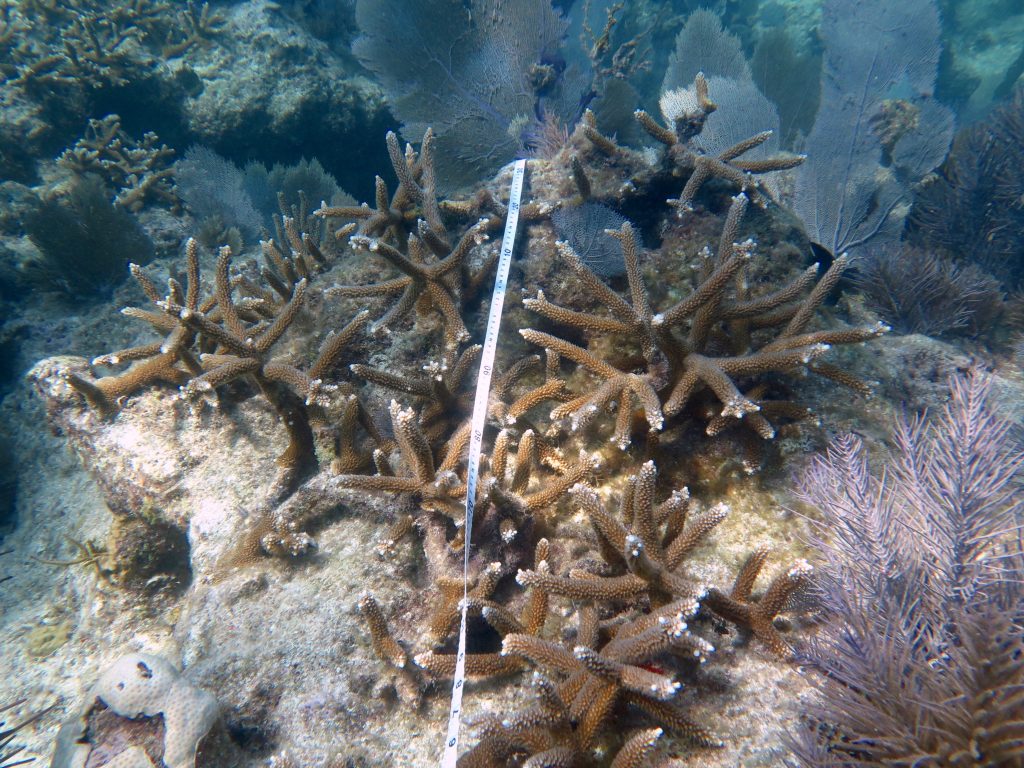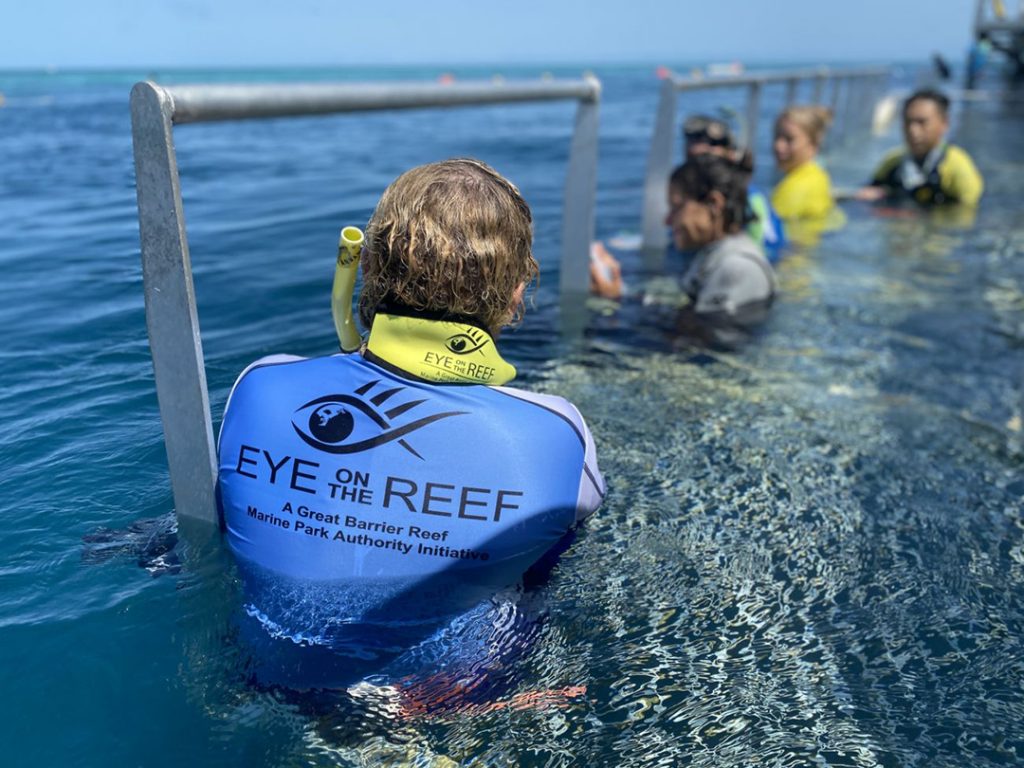Ecological Monitoring
A monitoring plan can also help managers determine what type of a monitoring program should be implemented. Below are three different types of monitoring programs:
Routine Monitoring
Routine monitoring is often used by coral reef managers to monitor the state of the reef through time, allowing them to establish baselines and detect changes. Examples of widely used routine monitoring programs include those developed by the Global Coral Reef Monitoring Network (GCRMN) and the Atlantic and Gulf Rapid Reef Assessment (AGRRA).

Diver laying down a transect tape. Photo © Tim Calver
Responsive Monitoring
Responsive monitoring is used by managers to complement a routine monitoring program when reefs are impacted by acute disturbances such as bleaching, storm damage, ship groundings, and disease outbreaks. Managers often need to know the extent and severity of these acute impacts as soon after they occur. Responsive monitoring helps to ensure timely and credible communication with stakeholders and helps target management actions which support recovery. Developing a responsive monitoring program follows the same steps presented in the Designing a Monitoring Plan section, however decisions in each of these steps should be guided by the type and severity of the impact(s).

Monitoring restored fragments of Acropora cervicornis in the Florida Keys. Photo © Margaux Hein
Participatory Monitoring
Participatory monitoring programs involve non-expert observers–sometimes called citizen scientists–in monitoring activities. These monitoring activities may be led by scientists or managers or have observers monitoring reefs independently. Coral reef managers often use participatory monitoring programs to assess reef condition, disturbance detection, impact assessment following disturbances, and assessments of the effectiveness of management actions. Examples of participatory monitoring include the Great Barrier Reef Marine Park Authority Eye on the Reef Program and the Eyes of the Reef Hawaii Program.

Citizen scientists at work in the water as part of the Eye on the Reef Program on the Great Barrier Reef. Photo © Great Barrier Reef Marine Park Authority
